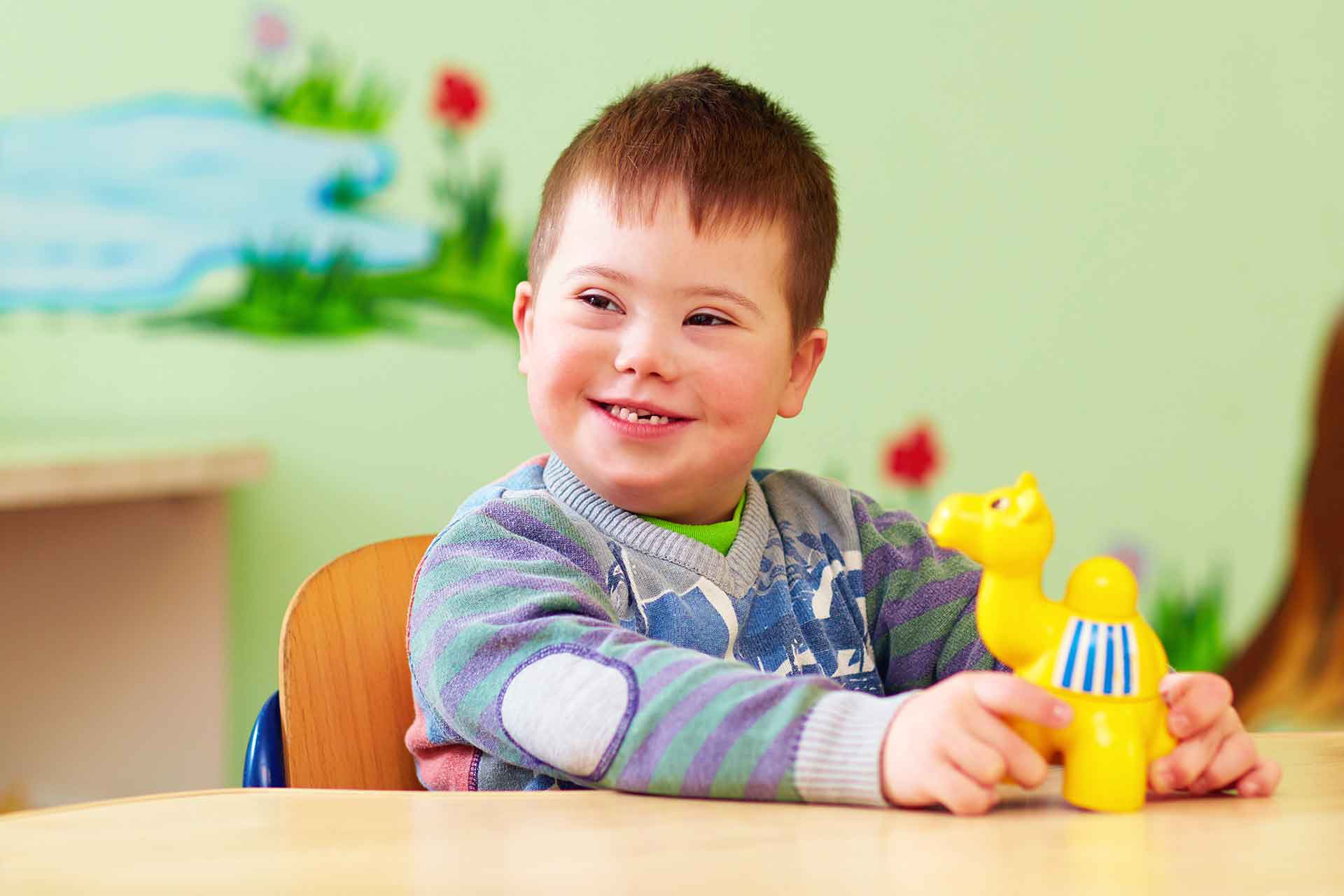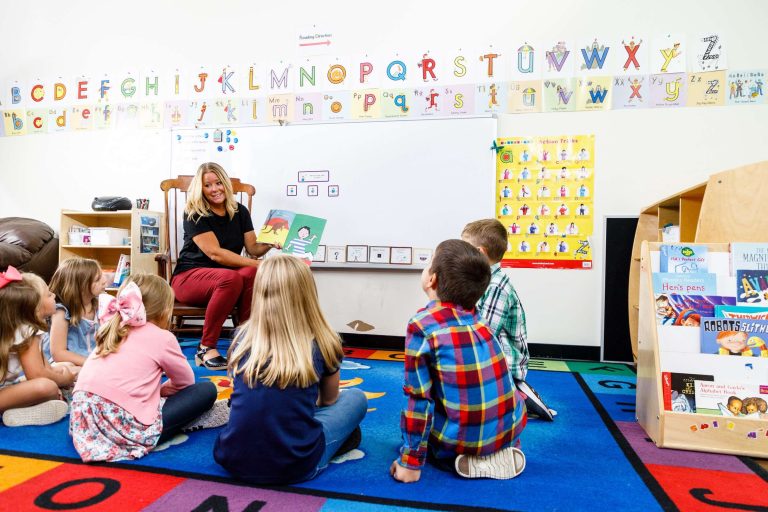How to Support a Child With Down Syndrome in Preschool

To support a child with Down syndrome in preschool, provide individualized learning plans and incorporate inclusive activities. Supporting a child with Down syndrome in preschool requires a tailored approach that focuses on their individual needs, strengths, and challenges.
It is crucial to create inclusive learning environments and provide appropriate accommodations to facilitate their social and cognitive development. By fostering a supportive and accepting atmosphere, educators can help children with Down syndrome thrive in preschool while promoting their overall well-being.
We will explore effective strategies that can be implemented to support the unique learning requirements of children with Down syndrome in a preschool setting. We will also discuss the importance of collaboration between educators, parents, and specialists to ensure the holistic development of these children.
Understanding Down Syndrome In Preschool
Symptoms And Characteristics Typical Of Children With Down Syndrome
Children with Down Syndrome may exhibit certain physical and developmental characteristics. Some common physical symptoms include a flat facial profile, almond-shaped eyes, and a small head. In terms of development, children with Down Syndrome may experience delays in reaching developmental milestones, have poor muscle tone, and be at a higher risk for certain health conditions. It’s important for preschool educators and parents to be aware of these characteristics in order to provide appropriate support and accommodations.
The Importance Of Early Intervention And Support
Early intervention plays a crucial role in supporting children with Down Syndrome in the preschool setting. By identifying and addressing developmental delays early on, educators and parents can help children with Down Syndrome reach their full potential. This can involve regular assessments, individualized education plans, and access to specialized therapies such as occupational and speech therapy. The early years are a critical period for learning and development, and providing early intervention can significantly impact a child’s long-term outcomes.
Creating An Inclusive Learning Environment For Diverse Learners
Ensuring that the preschool environment is inclusive and accommodating for children with Down Syndrome is essential. This involves implementing teaching strategies that cater to diverse learning needs, providing sensory-friendly spaces, and promoting positive peer interactions. By creating an inclusive environment, children with Down Syndrome can feel valued and supported, and their peers can gain a deeper understanding and appreciation for individual differences.
Strategies For Down Syndrome Support
Supporting a child with Down Syndrome in a preschool environment involves employing tailored strategies that cater to their individual learning needs and abilities. By understanding and implementing effective teaching methods, and communication techniques, and utilizing visual aids and structured routines, educators and parents can create a supportive and inclusive environment for children with Down Syndrome. Here are some essential strategies for Down Syndrome support in preschool:
Tailoring Teaching Methods To Individual Learning Styles
Every child with Down Syndrome has unique learning capabilities and preferences. Educators must adapt their teaching methods to accommodate different learning styles, such as visual, auditory, or kinesthetic. By identifying the child’s strengths and areas of improvement, teachers can customize lesson plans and activities to suit their individual needs. Utilizing multisensory approaches, incorporating hands-on learning experiences, and providing repeated exposure to new concepts can be beneficial for children with Down Syndrome.
Effective Communication Techniques With Children Who Have Down Syndrome
Communication is key to fostering an inclusive and supportive environment for children with Down Syndrome. Using clear, simple language, maintaining eye contact, and employing positive reinforcement can enhance communication with these students. Encouraging active listening, providing visual cues, and allowing ample processing time for responses can facilitate effective two-way communication. By creating a supportive and respectful communication environment, educators can promote social interaction and language development among children with Down Syndrome.
Utilizing Visual Aids And Structured Routines For Better Engagement
Incorporating visual aids, such as picture schedules, visual timers, and cue cards, can enhance comprehension and engagement for children with Down Syndrome. Visual supports help in fostering independence, promoting self-regulation, and reducing anxiety in the classroom. Additionally, implementing structured routines and predictable schedules provides a sense of security and stability for children with Down Syndrome, aiding in their overall cognitive and emotional development.
Inclusive Education Principles
When supporting a child with Down syndrome in a preschool setting, it’s crucial to uphold inclusive education principles. Inclusive education focuses on fostering an environment where all children, regardless of their abilities or disabilities, are embraced and provided with equal opportunities for learning and growth.
Embracing Diversity Within The Classroom Setting
Embracing diversity within the classroom setting involves creating an environment where every child feels welcomed and valued. Teachers can promote diversity by displaying visual aids and materials that represent various cultures, abilities, and backgrounds. Utilizing inclusive language and celebrating differences through activities and discussions can also help create a supportive and inclusive classroom culture.
Collaboration Between Parents, Teachers, And Therapists
Effective collaboration between parents, teachers, and therapists is fundamental in supporting a child with Down syndrome in preschool. Regular communication and exchange of information among these stakeholders enable a holistic approach to the child’s education. It allows for the sharing of insights and strategies that can be implemented both at school and home, creating a consistent and supportive network for the child’s development.
Adapting The Curriculum For Accessibility And Inclusion
Adapting the curriculum ensures that it is accessible and inclusive for all children, including those with Down syndrome. This may involve modifying learning materials and activities to suit individual needs, providing additional support, and incorporating multi-sensory approaches to learning. By adapting the curriculum, educators can cater to diverse learning styles and ensure that each child can actively participate in the learning process.
Enhancing Social Integration
Supporting a child with Down syndrome in preschool involves creating an inclusive and supportive environment that promotes their social integration. By focusing on facilitating peer interactions and friendships, encouraging cooperative play and group activities, and understanding the role of preschools in fostering acceptance and empathy, we can help these children thrive in their social development.
Facilitating Peer Interactions And Friendships
Facilitating peer interactions and friendships is crucial in supporting a child with Down syndrome in preschool. Teachers and caregivers can create opportunities for the child to engage with their peers in structured activities and play. Organizing playdates or pairing them with a buddy system can foster meaningful connections and friendships.
Encouraging Cooperative Play And Group Activities
Encouraging cooperative play and involvement in group activities can promote social integration for children with Down syndrome. Structured games, team projects, and group-based learning exercises create a supportive environment for collaboration and interaction among the children.
Role Of Preschools In Fostering Acceptance And Empathy
Preschools play a pivotal role in fostering an environment that promotes acceptance and empathy for all students, including those with Down syndrome. Educators can incorporate inclusive lesson plans, teach empathy and understanding, and provide opportunities for peer education to cultivate a culture of support and acceptance.
Building Independence And Confidence
Building Independence and Confidence is crucial for supporting a child with Down Syndrome in preschool. By fostering self-help skills and autonomy, providing positive reinforcement, and employing strategies to overcome common challenges, caregivers and educators can empower these children to thrive and develop to their full potential.
Fostering Self-help Skills And Autonomy
Encouraging children with Down Syndrome to master self-help skills not only fosters independence but also enhances their self-esteem. Simple tasks such as dressing, feeding, and personal hygiene can be practiced in a supportive environment where children are given the opportunity to learn at their own pace. Creating a daily routine and offering visual cues can help establish consistency and increase the child’s confidence in performing these tasks independently.
Positive Reinforcement And Celebrating Achievements
Using positive reinforcement techniques, such as verbal praise and rewards, can motivate children with Down Syndrome to continue working on their tasks and behaviors. When they achieve a milestone, it’s essential to celebrate their accomplishments. This recognition helps boost their self-confidence and encourages them to strive for further progress. It’s crucial to show enthusiasm and positivity when acknowledging their efforts, creating an environment that promotes a can-do attitude.
Strategies To Overcome Common Challenges In Preschool
- Creating inclusive learning environments to support social interaction and communication.
- Implementing visual aids and assistive technology to aid in comprehension and engagement.
- Collaborating with parents and specialized professionals to develop personalized support plans tailored to the child’s needs.
- Providing additional time and support for transitioning between activities and tasks.
- Offering sensory-friendly spaces and activities to accommodate sensory processing challenges.
Resources And Support Systems
When it comes to supporting a child with Down syndrome in preschool, establishing a robust network of resources and support systems is crucial. These systems not only aid in providing a nurturing environment but also contribute to the overall well-being and development of the child. Let’s explore the essential resources and support systems that play a vital role in supporting children with Down syndrome in preschool.
Professional Support And Training For Educators
Educators and preschool staff need specialized training and knowledge to effectively support children with Down syndrome. Ensuring professional support and training for educators is essential for creating an inclusive and conducive learning environment. This training equips educators with the skills and understanding required to cater to the unique needs of children with Down syndrome.
Connecting Families With Community Resources And Networks
Facilitating the connection between families of children with Down syndrome and community resources and networks is fundamental. These connections provide families with access to support groups, counseling services, and other valuable resources. By building community networks, families can share experiences, obtain essential information, and find solidarity in navigating the challenges associated with raising a child with special needs.
Continuous Learning And Development Opportunities For Children
Continuous learning and development opportunities are vital for children with Down syndrome to thrive in a preschool setting. Providing a variety of activities and tailored interventions fosters the holistic development of these children. Tailored programs that support motor skills, language development, and social interaction enable children with Down syndrome to achieve their full potential in a preschool environment.

Frequently Asked Questions For How To Support A Child With Down Syndrome In Preschool
What Are The Best Ways To Support A Child With Down Syndrome In A Preschool Setting?
Supporting a child with Down Syndrome in preschool involves creating an inclusive environment, providing individualized education plans, using visual aids and sensory resources, and promoting social integration through peer support and understanding.
How Can Teachers And Staff Members Help Children With Down Syndrome To Thrive In A Preschool Environment?
Teachers and staff can support children with Down Syndrome by receiving specialized training, implementing personalized learning strategies, fostering a supportive and inclusive classroom culture, and collaborating with specialists and parents to address the child’s unique needs.
What Are Some Effective Techniques For Promoting Social Interaction And Communication Skills For Preschoolers With Down Syndrome?
Encouraging peer interaction, using visual communication tools, providing speech and language therapy, organizing social skill-building activities, and creating a welcoming and understanding atmosphere are effective strategies for supporting social interaction and communication skills in preschoolers with Down Syndrome.
Conclusion
Supporting a child with Down syndrome in preschool requires patience, creativity, and a collaborative approach between educators, parents, and therapists. By creating an inclusive and supportive environment, we can help these children thrive and reach their full potential. With understanding and empathy, we can make a positive impact on their early learning experiences.

With over 20 years of experience in early childhood education, Jane brings a wealth of knowledge to Classroom Journey. She specializes in play-based learning and has a passion for inclusive education.






